projects
contact/buy
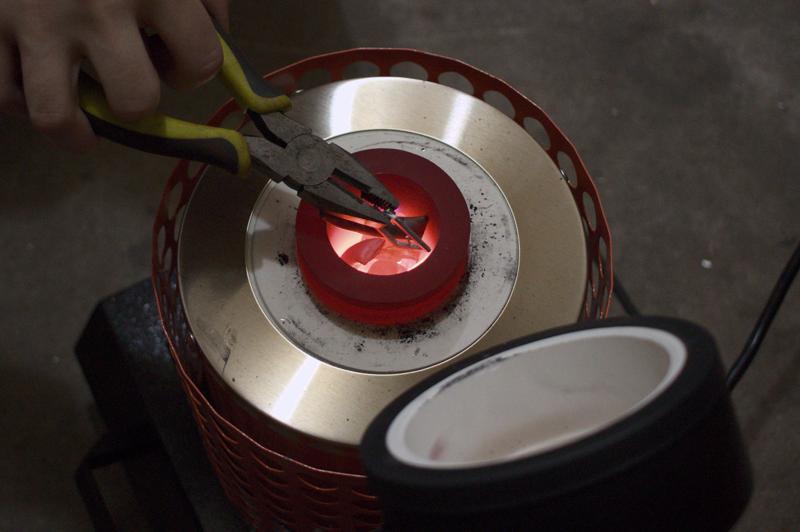
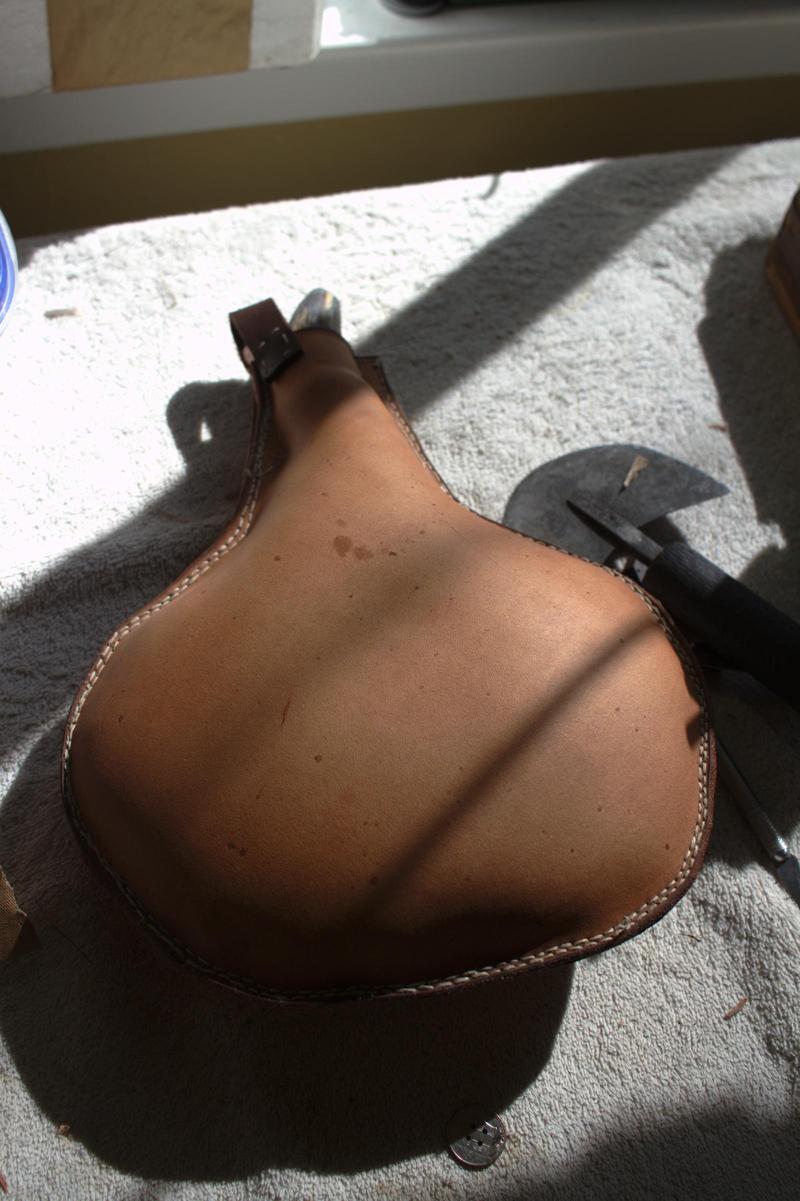

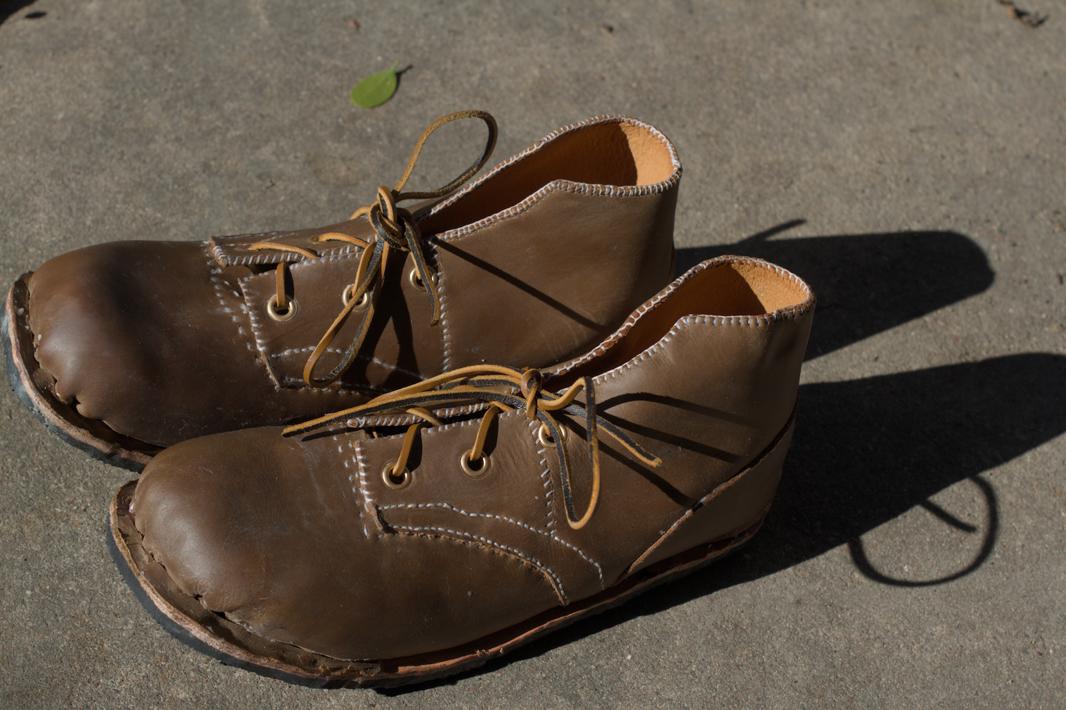

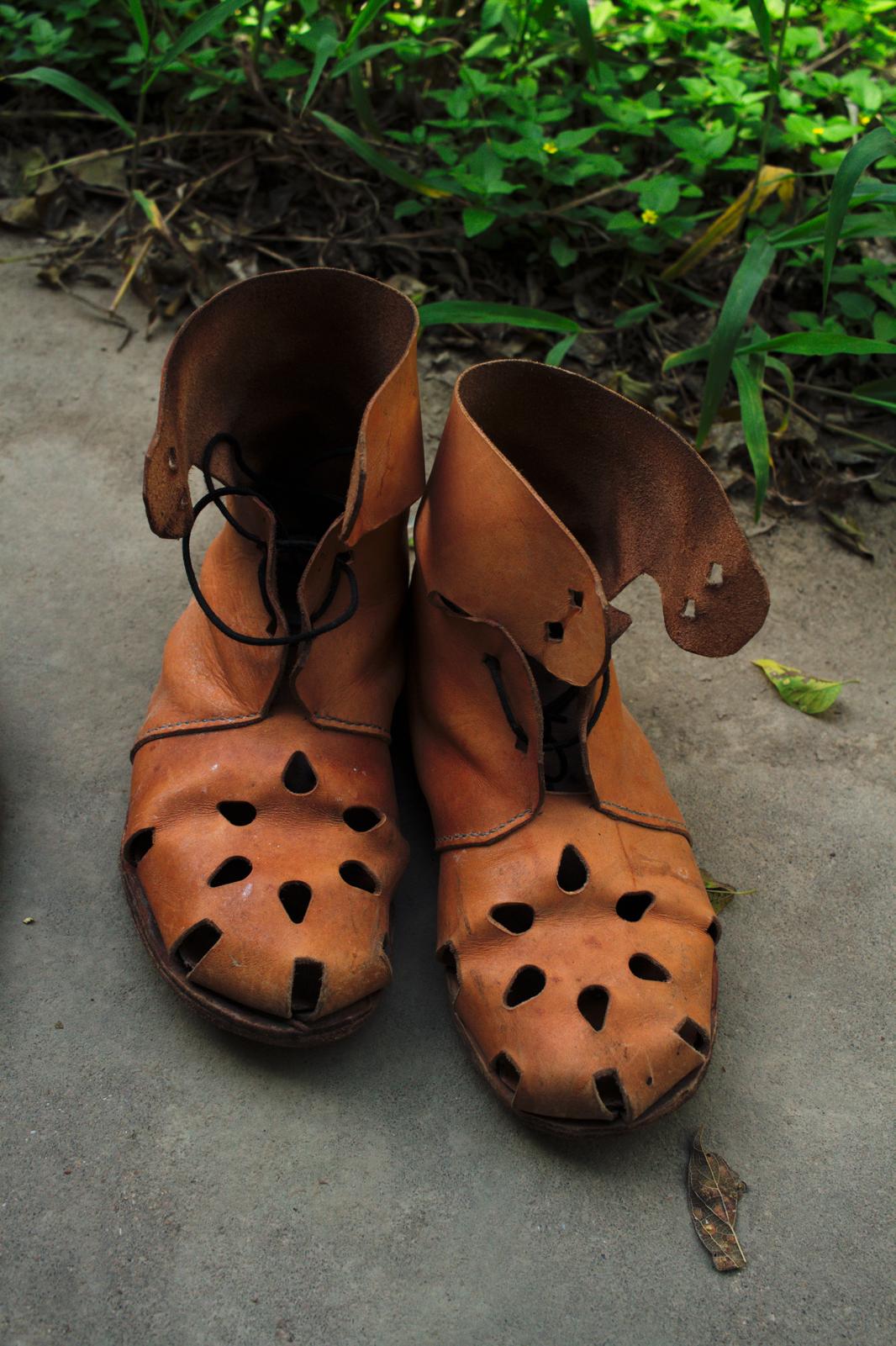
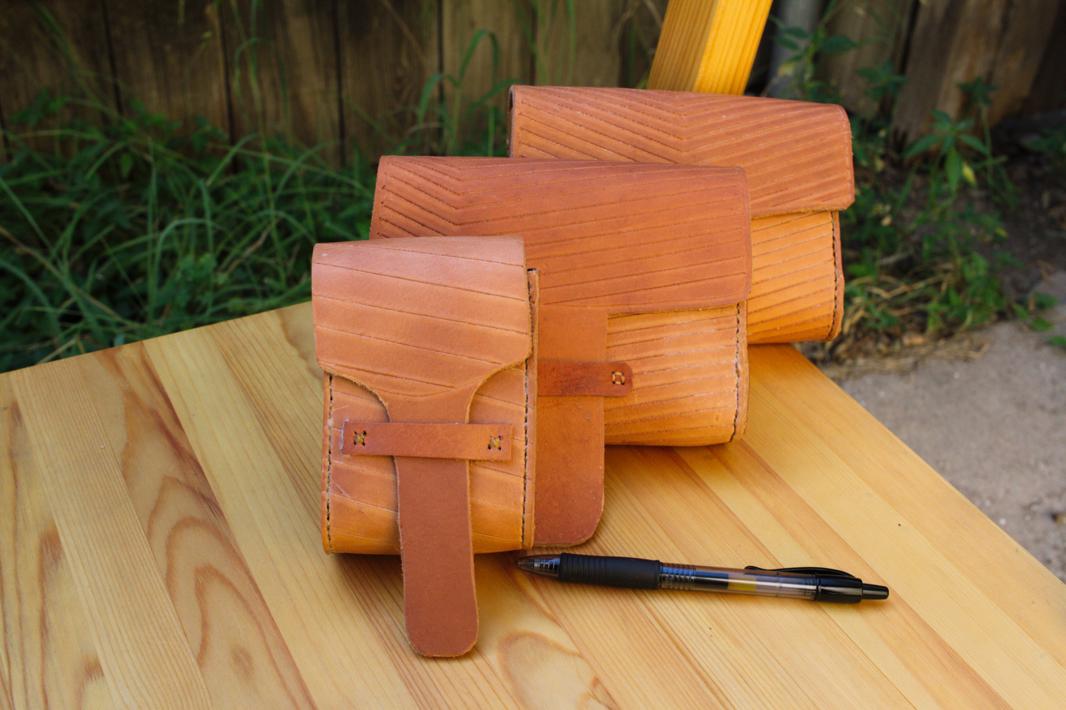

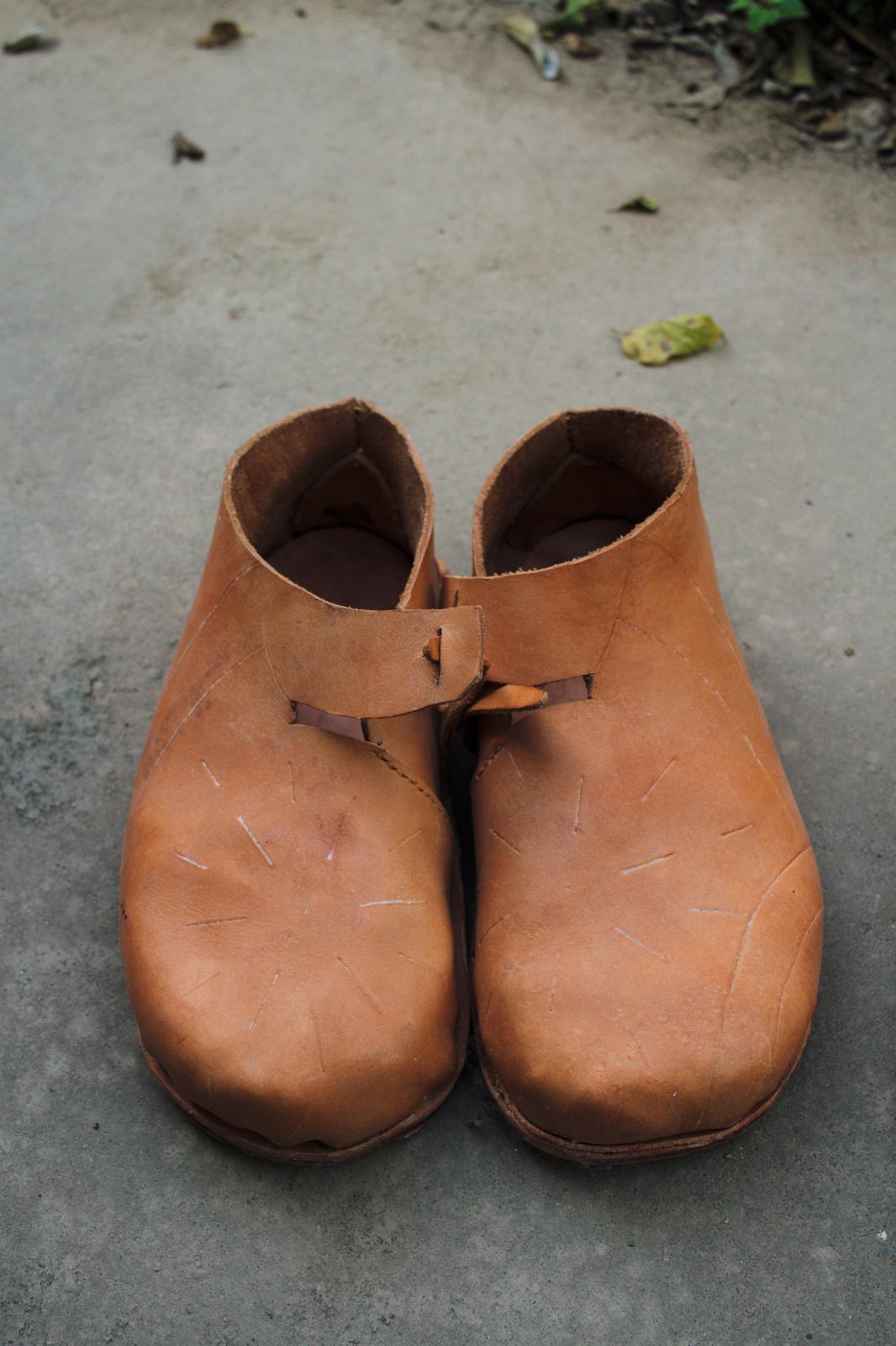

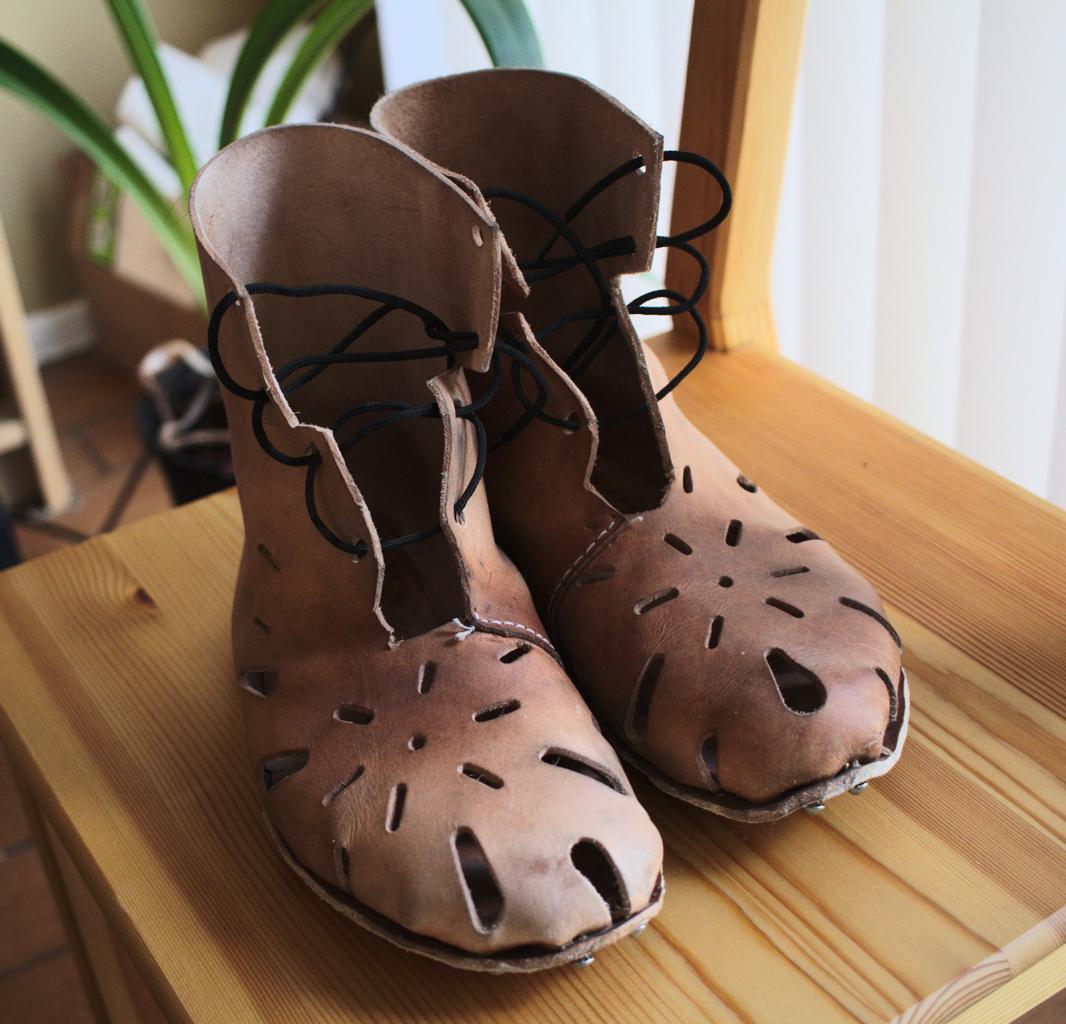
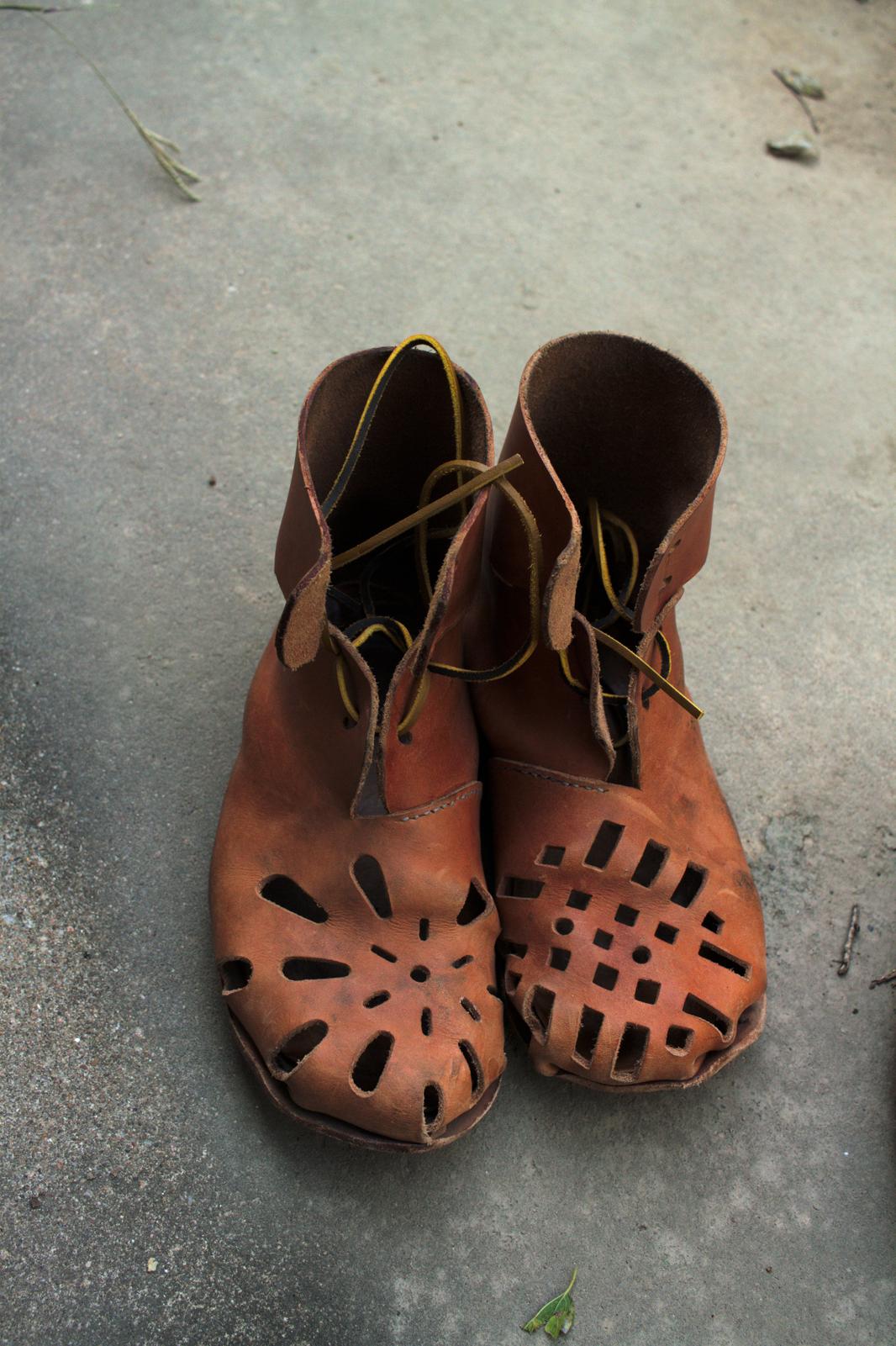
Remarks on the Use of Roman Style Shoes.
Earlier this year I made myself a pair of shoes generally inspired by the shoes of the Romans. I say generally inspired, as I wish to make no strong claims with respect to their accuracy. My desire was to have a decent pair of walking shoes, not a reproduction artifact, nor a historically accurate costume piece, and this design appealed to me as a person with no shoemaking experience and very little leatherworking experience. While mine may not be exactly caligae, for the purpose of this article, I shall call them thus.
I've seen many articles on the Internet discussing the production of such shoes, and I don't beleive I have too much to add to what has been said already on that topic. But having worn these now as my principal walking shoe for the better part of a year, and having done some maintainance and modification, I hope I can offer some different insight.
Hence this article shall be mostly a shoe review, and I hope to write a follow up discussing recent modifications I've done.
A Review
The most famous style of shoes used by the Romans seems to be their Army Boot, the Caliga. While this is no doubt an interesting shoe for its own merits, many of the qualities that moderns will see as special about it are not that exceptional with respect to other shoes excavated from Roman sites.
They are of fairly simple construction, generally three peices of leather nailed together through the sole, with some stitching on the ankle, with an openwork upper on the same peice of leather as the midsole.
Being as I was, new to the wearing of hobnailed boots, I had some apprehensions. An oft refferenced passage from Josephus describes a certain centurion meeting his death as a consequence of poor traction while running in his hobnailed boots, and while I do not have the same worries about mobs of angry Jews, I have some appreciation for shoes conductive to my remaining on my feet.
But the experience in walking in the new shoes was not as bad as I worried. Certainly on some surfaces they loose traction, hard and smooth surfaces such as marble tiles, steel roadplates and some cobblestones and bricks. But for the most part on all surfaces, from asphalt and cement pavement to mud and grass and rocks, they faired alright, usually not worse and generally better than bare leather. The exception is probably certain types of smooth poured floors I have encountered in large stores, and linoleum. I suppose neither of these probably mattered much to the Romans. And as far as standing on a bed of sharp nails, it certainly didn't feel like it.
While they may be analagous to modern boots, caligae are frequently reffered to nowadays as sandals, and I suspect the open upper is the principal reason. While in some respects this is certainly a significant difference, I find myself drawn to the opinion that modern boots for hiking and combat, with patchwork uppers of alternating leather and breathible textile, are not too different from caligae with a pair of socks built into the shoe.
The fact that they do offer very little thermal insulation, and quite a bit of flexibility with regard to sock thickness, is also a positive feature worth noting. With the right socks they can be quite comfortable in the cold, and equally pleasant in the heat, while never creating the unfortunate sauna effect that some more completely covered shoes have. On the other hand, I suspect they suffer in the snow, though I have yet to test this in any significant depth. Obviously they are not waterproof, but again, the open design means most water will run out quickly, rather than building up inside the shoe.
A topic frequently mentioned in conjunction with leather shoes is the obligate wearing in period. Caligae dodge part of this problem by having the discontinuous upper, there is no toe box or such thing to struggle against, but nevertheless I think its fair to say they do wear in a bit, particularly the sole. As I built mine, as I beleive many people do, without a last, the sole began pretty much flat, and visibly wore in to match the curve of my foot. If this caused some discomfort I don't beleive I noticed it, but I may have been too busy getting used to walking with hobnails and things to think of it.
That being said, installing new nails is a bit of an uncomfortable experience. As the sole curved to match the foot this caused some nails to be exposed to much more wear than others, and consequently some nails (particularly on the heel and ball of the foot) were worn nearly off before those in the arch showed much damage at all. As such when I got around to replacing a few of the nails, suddenly the entire surface of the foot was knocked off kilter. Though the shoe righted itself fairly quickly, it certainly left my feet aching for a day or two. My second go at replacing the nails went much better, but even still wasn't especially pleasant.
There are a few other drawbacks. Donning and doffing tends to be rather slow, though maybe I just haven't gotten quite the hang of it. As with many open shoes, its pretty easy to get sticks and rocks stuck inside under the toe. And, of course, the nails have the potential to damage certain types of floors. When installed right, they shouldn't stab into your feet, but particularly when replacing them I've occasionally gotten a spike sticking out that needs to be hammered down.
As far as durability goes, well. I have a tendancy to wear through shoes quickly, and its relatively rare that a pair of boots of mine last in regular rotation for more than 6-8 months without getting to the 'litterally falling apart' stage, so the fact that I'm still wearing them is arguably a good sign. I am generally optimistic that they'll last a while, and they're certainly off to a good start.
Nevertheless, hobnails wear out pretty fast. I know I erred on the side of using fewer with comparison to many Roman shoes; probably a shoe with a hundred and fifty nails will expose bare leather to the ground rather more slowly than mine. That being said, cement sidewalk is quite an effective metal file, and the nails are sure to wear out sooner or later if exposed to anything harder than mud. I don't think its strictly speaking neccisary to have a solid face of iron on the shoe bottom, however. Even nails with no protrusion from the leather sole are still going to increase the longevity of the sole. Traction may suffer, but in cases where the extra grip of the hobnails is desired, one can adjust ones gait to better use them, and its not really neccisary to have all nails nice and sharp all the time.
The leather (mine is vegtan'd cowhide from Tandy Leather) itself is fairly hardy. I have some concern about a few of the peices tearing, but this is more of a statement about my sloppy cutting job than about the design of the shoe, and nothing has torn yet, anyway. I did eventually wear though the heel, but this is again, more of a construction defect (that many Roman shoes' designs address but mine didn't) rather than a fundamental flaw. If I make another pair it shouldn't be an issue. And even with several dunkings in streams and puddles, (in which the upper was clearly fully saturated, though the sole may or may not have been) the whole shoe retains its general suppleness and hasn't dried out. I have treated them, from time to time, with neets foot oil and beeswax, and this may, or may not, have contributed positively.
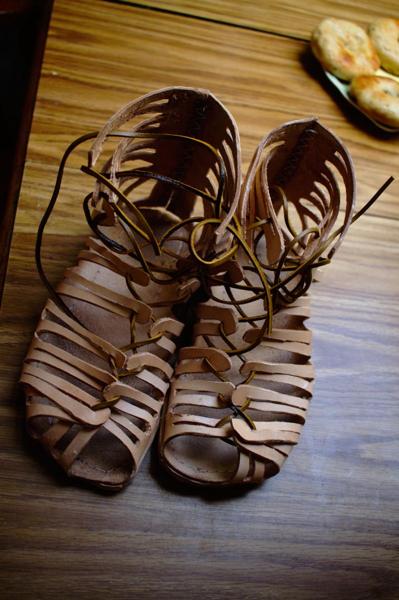
Recently after I made them, Initially I sewed the sole on, but the stitching wore out pretty fast.

New sole and nails after only a bit of wear.
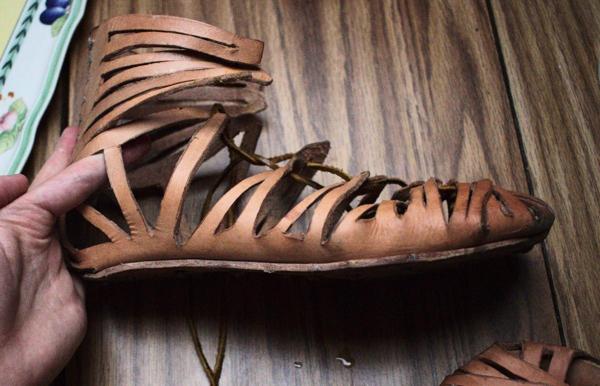
You can see how the sole has curled a bit around the foot. This is after a few months of use.
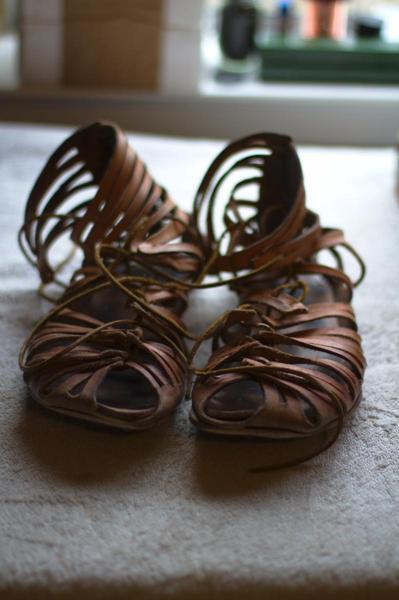
Earlier this week before beginning repairs.